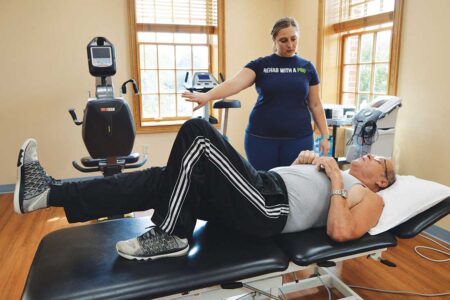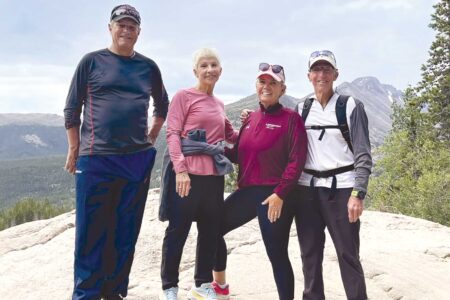Preparing for the Future
New Center demonstrates investment in healthcare providers
The New Health Sciences Center
The New Health Sciences Center
By the end of this fall semester, possibilities will have begun percolating into new opportunities in the Health Sciences Center.
Four departments previously spread out in three different buildings — the Physician Assistant Studies Department, Physical Therapy Department, Occupational Therapy Department, and the Department of Public Health and Health Professions — are now all in one space.
Faculty and staff members will have the benefit of casual conversations in the hallways — the kind that lead to curiosity, collaboration, and the development of innovative ideas. “These exchanges will open the door to more formal curriculum design and development on interprofessional courses and activities,” said Meghan Migeon, DMSc, G’05, director of the Springfield College Physician Assistant Studies program.
At an event at the new Center over Homecoming Weekend, donors and prospective donors got a peek at the possibilities and creative new adventures for students.
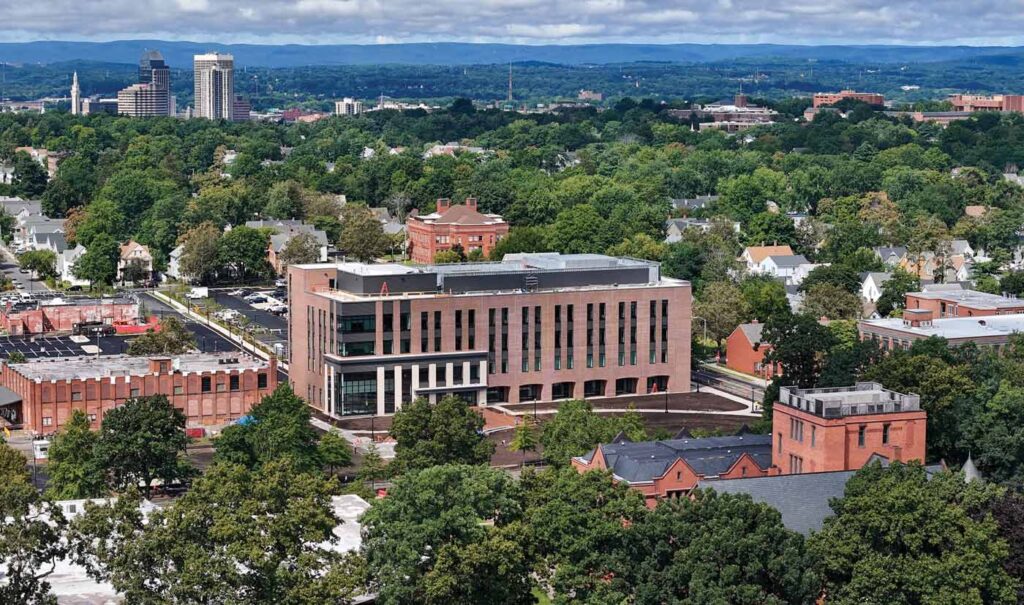
“The building was designed with great intention to enhance interprofessional education. Students will learn about the other professions and collaborate meaningfully in caring for people.”
Brooke Hallowell, PhD, dean of the School of Health Sciences
“Faculty and staff of the School of Health Sciences are dedicated to modeling and creating the future healthcare professionals who will go out there and take care of the next generation of patients,” Migeon said. “We’ve always been doing it in an excellent way, but the building allows us to take that to the next level. The philosophy of spirit-mind-body is embedded in the School of Health Sciences’ philosophy and embedded in each department’s goals. Teaching students how to take care of one’s physical health and body as well as their spirit, their mind, their mental well-being.”
Students will now have more of an advantage in learning how to improve not just their patient’s physical self but also their spirits and minds.
“The building was designed with great intention to enhance interprofessional education,” said Brooke Hallowell, PhD, dean of the School of Health Sciences. “Students will learn about the other professions and collaborate meaningfully in caring for people.”
Collaboration is a critical skill, Hallowell said, noting that evidence of interprofessional efforts and practice is now required by every one of Springfield College’s accrediting bodies. “There’s even an association over the accrediting bodies pushing for this emphasis,” she added.
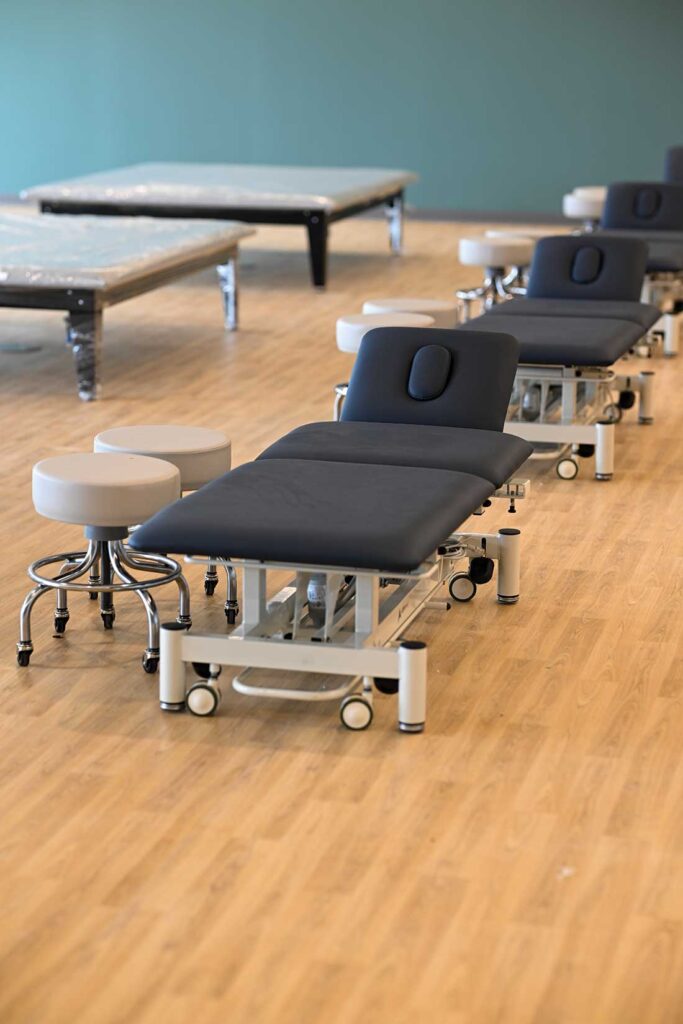
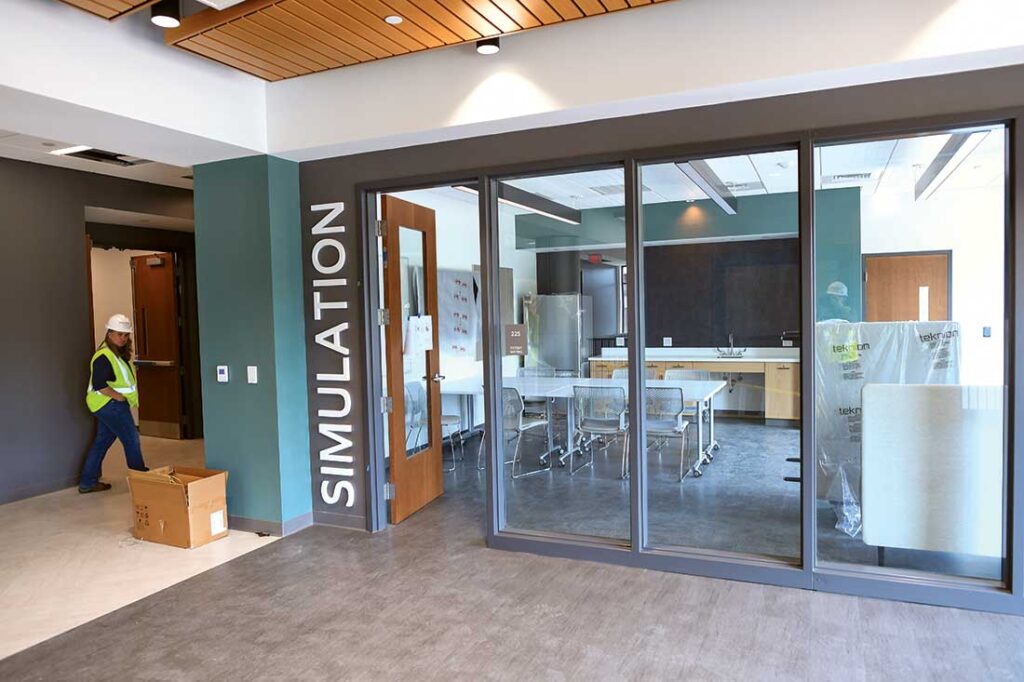
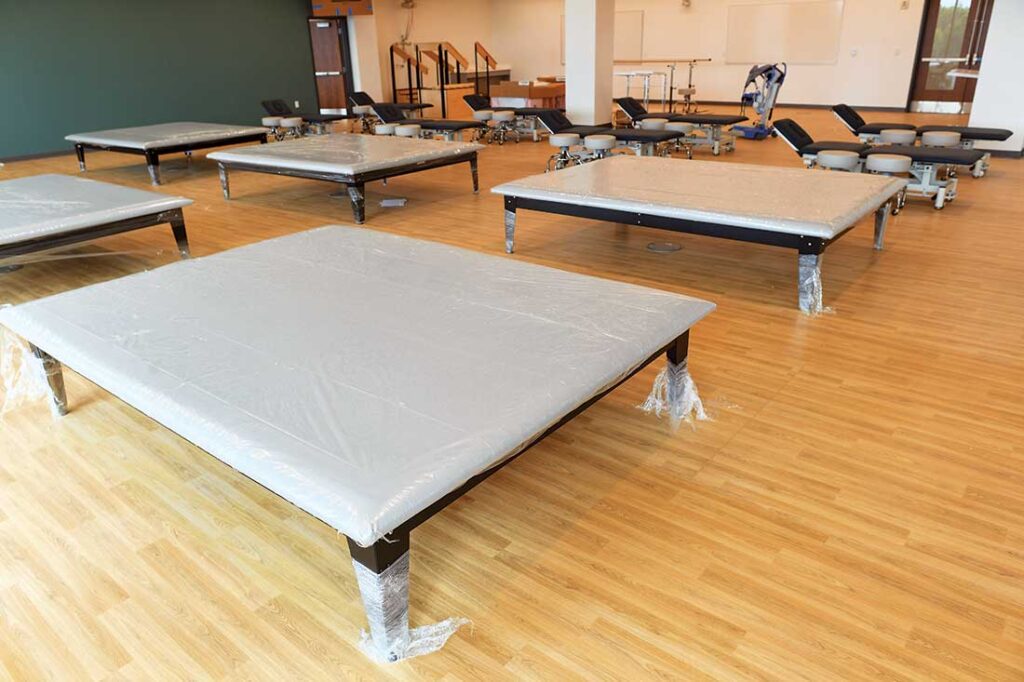
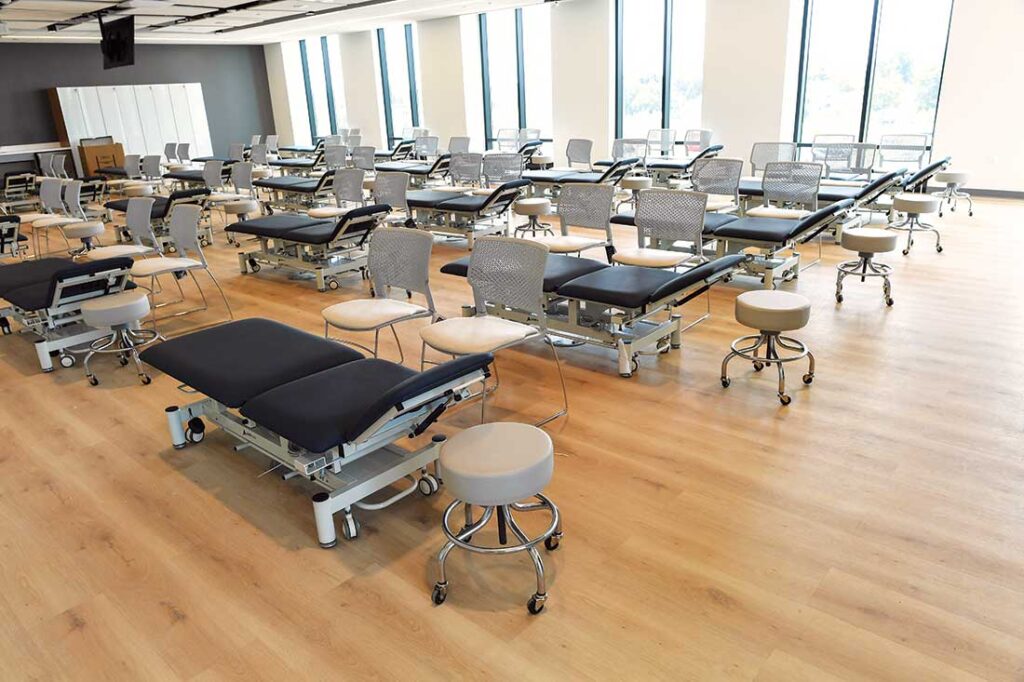
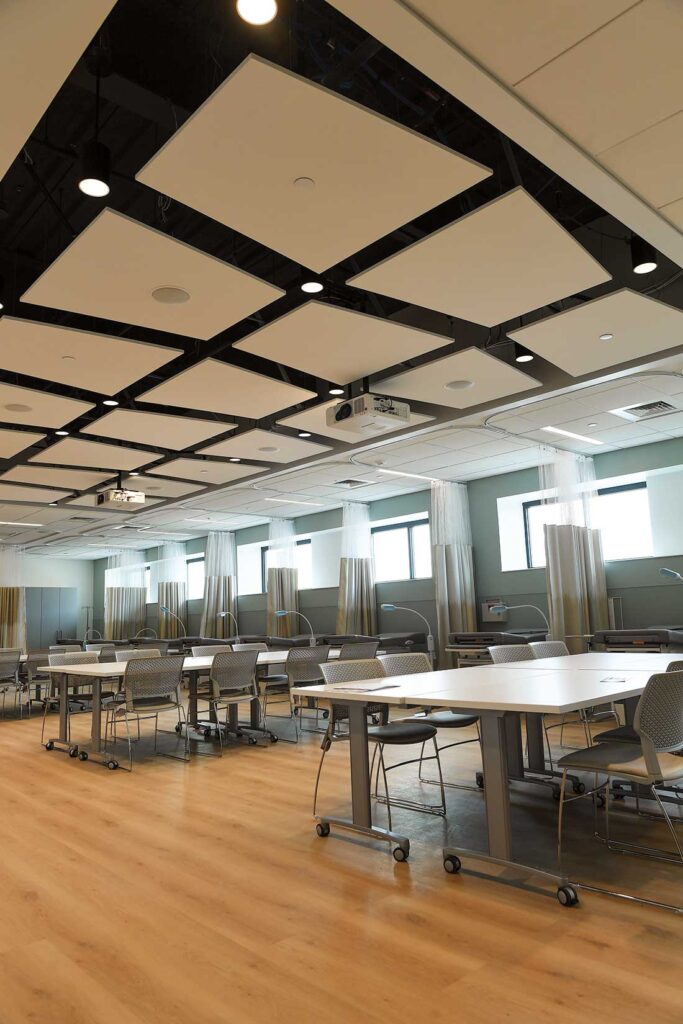
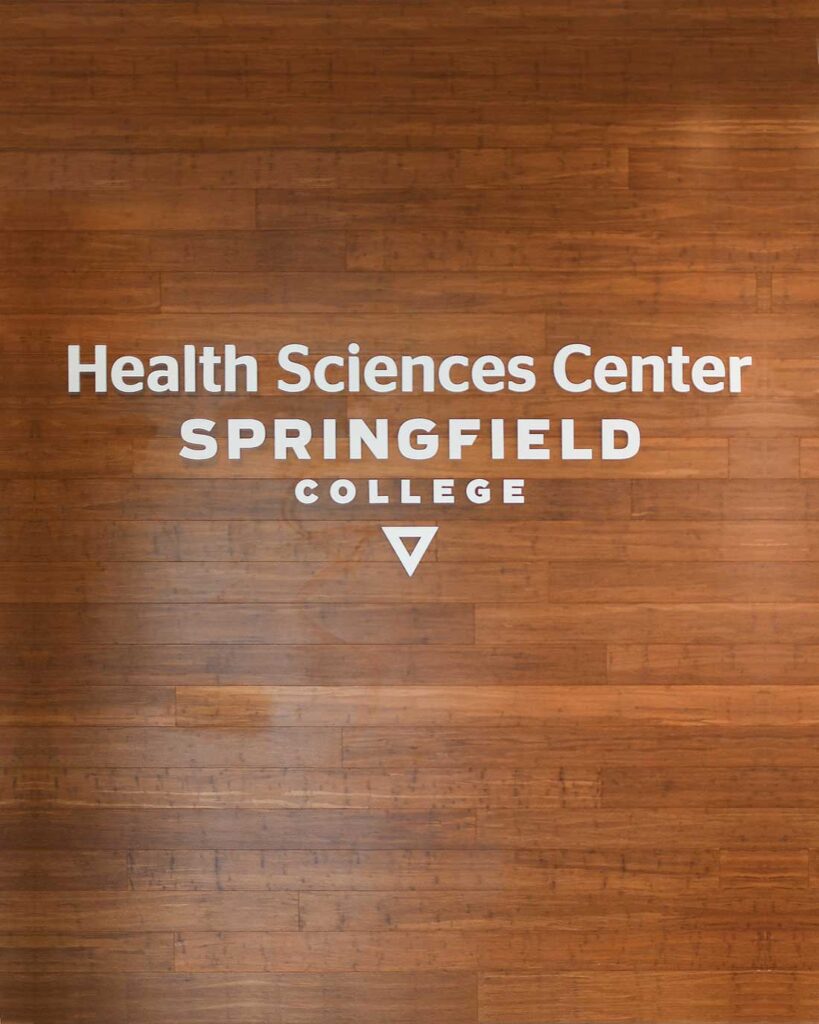
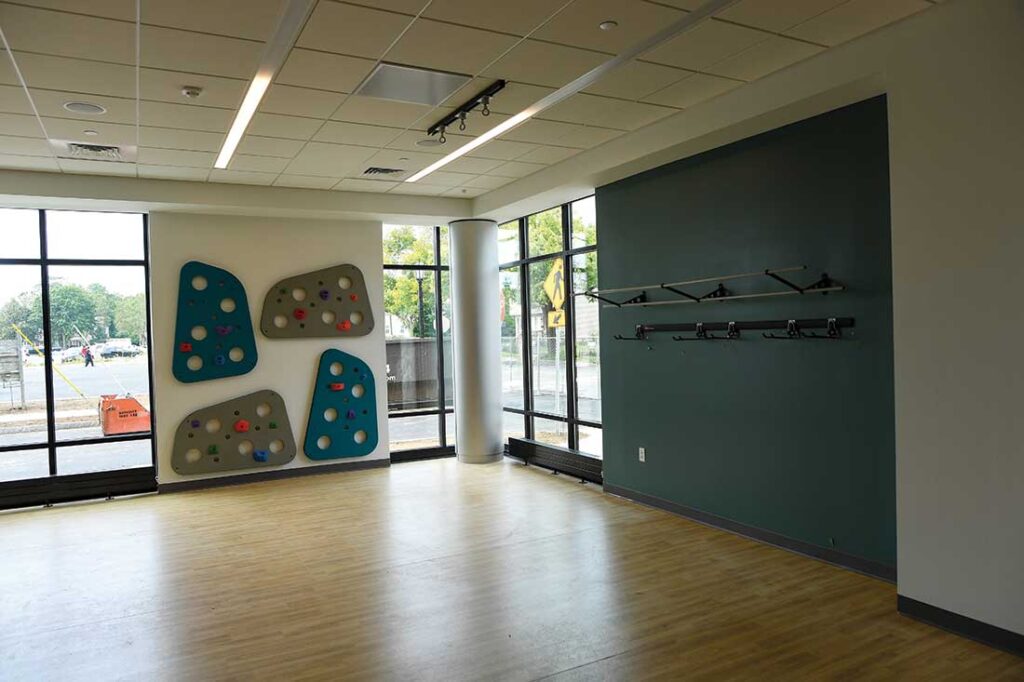
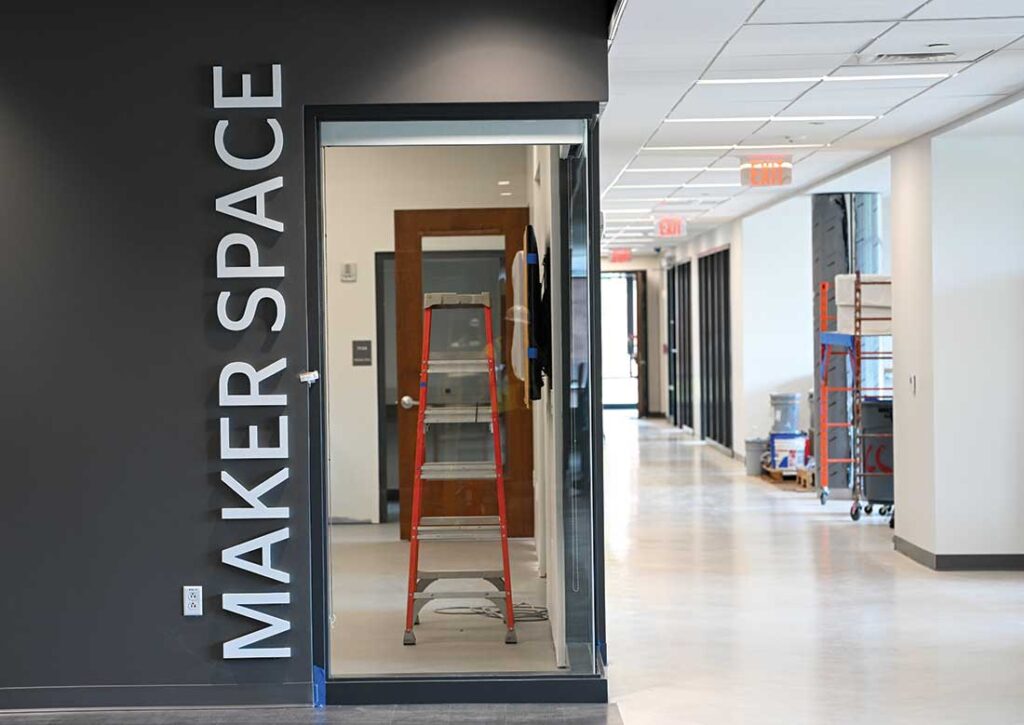
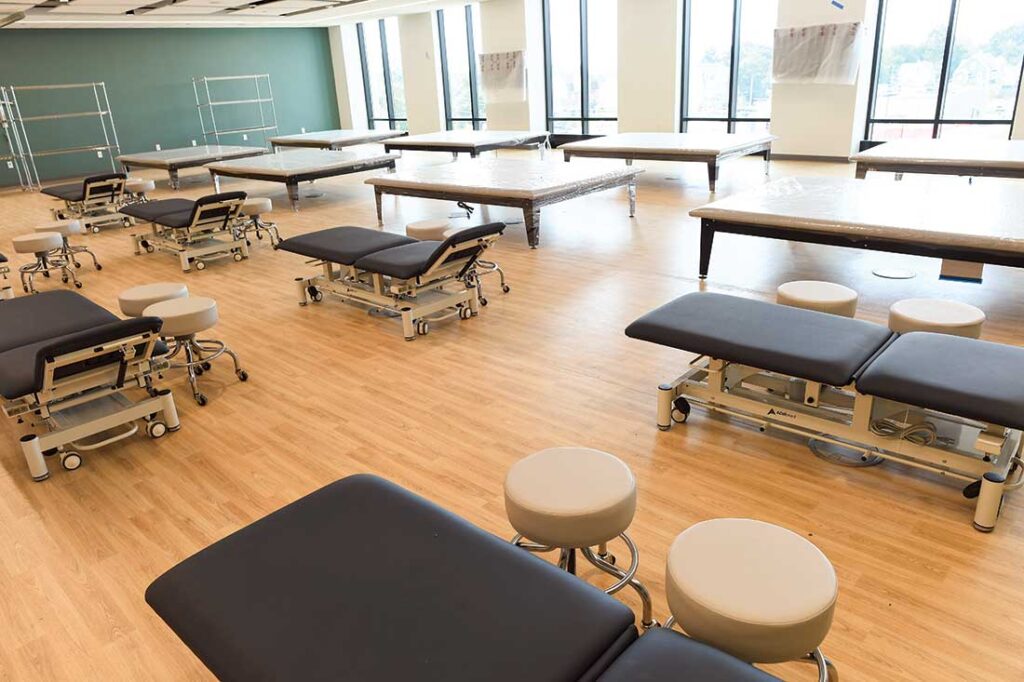
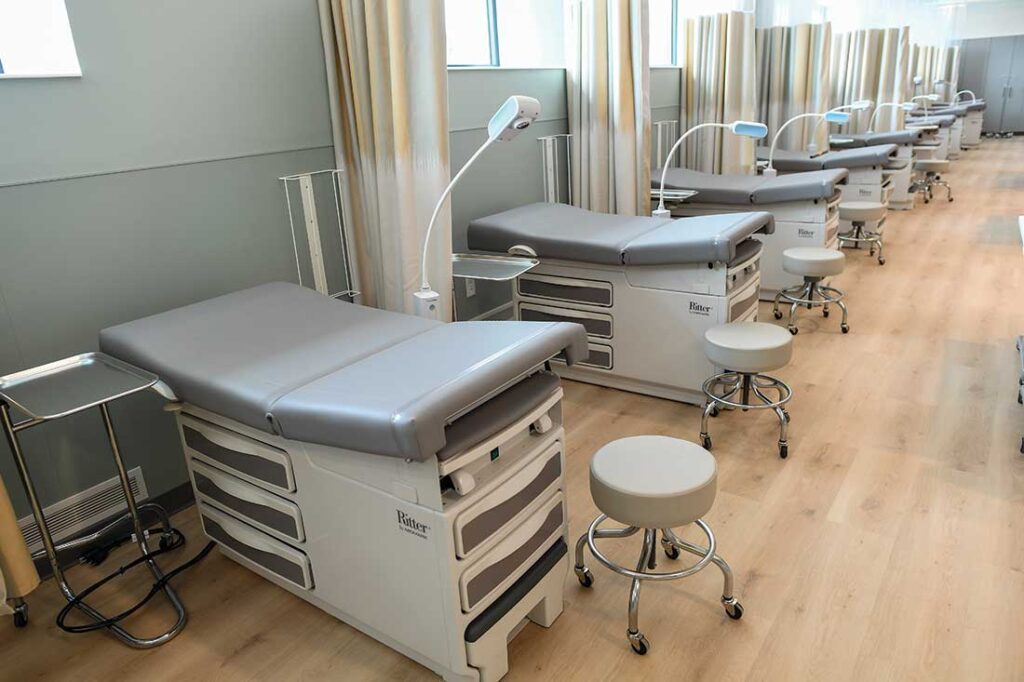
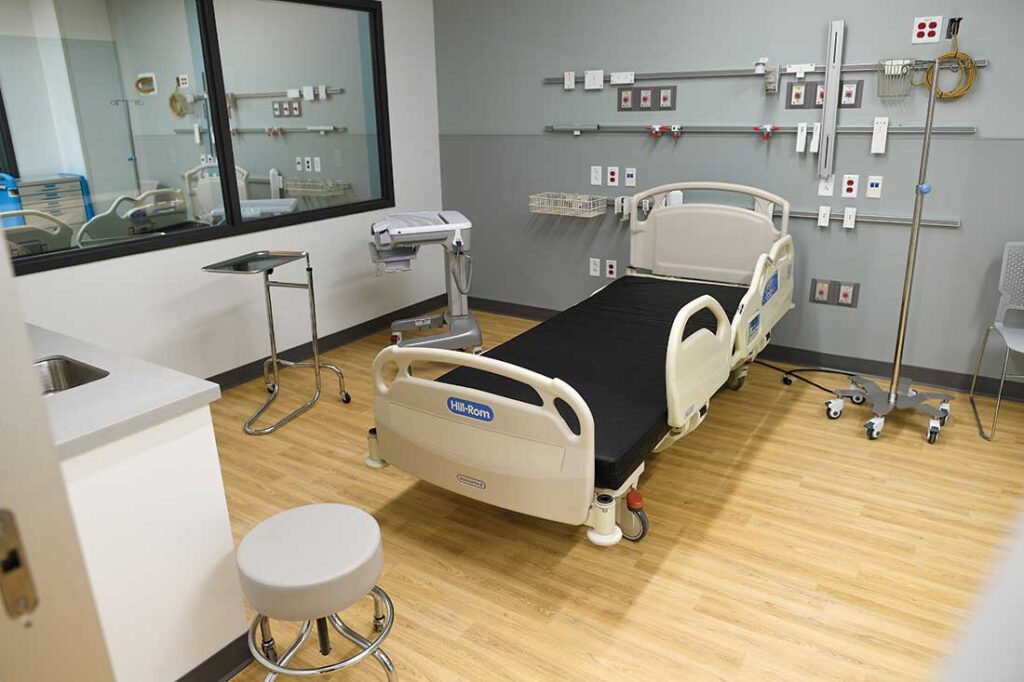
Hands-on learning spaces
The Health Sciences Center was designed to mirror real-life healthcare settings, which excites Migeon and other faculty and staff as much as the new, updated equipment does.
The state-of-the-art technology and tools in the Simulation Center, for instance, exponentially expand the size of the College’s SIM capacity, growing from two small SIM rooms to an entire suite of 14 rooms and ample additional simulation space for repairs, changing rooms, a waiting room, and other SIM-related rooms throughout. Migeon said multiple departments can use the simulation at the same time, and interprofessionally.
In the SIM Center, half of the space mirrors varied types of hospital settings, and the other half holds a series of standardized patient rooms, in which students will interact with human actors trained to portray a variety of health conditions. The rooms can be adapted to portray doctor’s offices, counseling rooms, and a variety of outpatient facilities. These labs are specific to each department’s learning, and the professions they prepare students to enter. “It’s very flexible to meet all our needs. They are adaptable to all of our different professions,” Migeon said.
A human donor anatomy lab is located on the top floor of the building, which is unique in that such labs are often hidden away in basements. The space is bright, open, and welcoming. “Students can learn through mentored experiences with dissections and work with real human specimens,” Hallowell said, noting that this is unique in higher ed. “Many institutions have transitioned to using digital anatomy equipment, rather than real human donors.”
There is an Activities of Daily Living Lab (ADL), which is essentially like an apartment with a bedroom, bathroom, and kitchen and living space, so students can practice working with patients in their home settings. Other spaces include a Pediatric Lab for students who hope to work with children, a History and Physical Lab for learning how to take histories and practice physical exams, and a Maker Space that will be used across campus for 3D printing and the creation of splinting materials or adaptive equipment.
“It will allow for more of a real-life practice of these encounters with patients,” Migeon explained. “When you’re in a simulation center with patients acting in a certain role, it allows you to practice those skills — putting hands on a patient, assessing them, talking to them. You can practice that in a real way. That allows the students to focus more on their work, the words that they say, and the exams that they’re administering.”
She added, “Once we put you in an environment that feels real, you can better focus on the patient’s well-being, health, and spirit.”
Growing New Programs
Springfield College has a strong tradition of providing quality Health Sciences programs. And just as professions change, these programs continue to change and grow to meet needs.
Springfield College is pleased to now offer:
- A new Occupational Therapy Doctoral Program. Adding this program now means students may seek either a master’s or doctoral degree.
- A combined Dance/Pre-Physical Therapy Program. This program combines two strong programs that meet the specific needs and interests of students.
- An undergraduate Public Health major. Interest in public health has grown since the pandemic, and this program is positioned to prepare students grounded in the Humanics philosophy.
- A certificate in Speech-Language Pathology. This undergraduate certificate program prepares students to become speech-language pathology assistants or complete prerequisite coursework to apply to graduate school to obtain a master’s degree to practice as a speech-language pathologist.
New calls for collaboration
Kathy Pappas, PT, DPT, associate professor of human anatomy, is pleased to be able to interact with her peers just as students can interact with one another. “We’ll be there with our colleagues, teaching side by side, students interacting in and out of classrooms,” she said. “The building gives us an opportunity for organic interactions, for authentic interactions, that happen when students notice that they’re learning together and side by side.”
Kevin Platt, class of 2024, graduate class of 2026, who is working toward a degree in Physician Assistant Studies, said working together in the same shared space under one roof helps students develop leadership skills. “And that’s going to end up impacting our patients in the future,” he added.
Opportunities for use across the campus
Hallowell said many of the spaces in the new Health Sciences Center will provide opportunities for departments across campus. Students in athletic training, for instance, can learn how to make prosthetics in the Maker Space, and art therapy students may help create adaptive toys and use the 3D printer there as well.
In the SIM Center, standardized patients — real people who are trained to exhibit symptoms — will work with health sciences students, and a new assistant dean, Melih Elcin, one of the world’s leaders in use of standardized patients. Elcin joined the College to enhance that work. Hallowell said the Social Work, Psychology and Theater Departments have expressed interest in collaborating, with student actors also posing as patients.
“We can coordinate efforts within and across courses on campus,” Hallowell said. “So much can be done as part of the curriculum and outside it.” She added, “We belong to an interprofessional education consortium in Western Massachusetts, and we hope to host events for that group and many others here.”
Serenity, sustainability on the academic green
Where once there was pavement, there will be green space and a labyrinth for healing. Those are among the plans for the new academic green that will allow Springfield College to put its best foot forward when greeting visitors to the entrance of the campus.
While the new Health Sciences Center provides opportunities for work focused on the body, the healing labyrinth on the green will integrate spirit and mind. An art student designed the pattern for the labyrinth, which will be accessible to all.
“It fits with the mission of Springfield College and the mission of the health professions as well,” said Brooke Hallowell, dean of the College’s School of Health Sciences.
The new academic green will also offer sidewalks that provide clearer wayfinding on campus, and there will be a focus on the environment, with charging stations for electric vehicles, a solar canopy to generate electricity, and drainage systems that discharge into the Earth, rather than into sewage systems.
The Health Sciences Center was also designed with sustainability in mind, and it features a great deal of windows that offer natural lighting. “A lot of thought went into making this a sustainable facility from an environmental standpoint,” Hallowell said.
~ Janice Beetle
Springfield College’s dedication to health sciences
Migeon said it is impressive and encouraging that Springfield College is so clearly committed to the health sciences. “They were committed to this building to help us continue to grow and thrive,” she said.
Springfield College President Mary-Beth A. Cooper, PhD, DM, agreed, “For me, having a crane in the air during the pandemic demonstrated to the community our commitment to growth and the commitment to our students and our faculty.”
“This building is important for many reasons, but probably the most important is our nod to growing the health sciences field.”
Springfield College President Mary-Beth A. Cooper, PhD, DM
Cooper added, “This building is important for so many reasons, but probably the most important is our nod to the growing health sciences field.”
Hallowell said Springfield College’s health-focused programs are among the best and most popular in the country. “It makes sense that we would be investing in those,” she added. “They contribute tremendously to the prestige and name recognition of Springfield College graduates. They are known for being successful, with, typically, one-hundred-percent-pass rates on national exams. They’re also known for being holistic thinkers and engaging deeply.”
While donor support has been tremendous and is much appreciated, there are still opportunities to help the health sciences at Springfield College leap into future readiness.
“We’d love to see additional support,” Cooper said. “The campus master plan calls for a new academic green and the new Health Sciences building is the first building of the new space. And so we envisioned down the road that there are going to be many more new buildings that will occupy our new academic green.” ![]()
Interested in supporting future healthcare practitioners by naming a lab or classroom?
Call the Office of Development at (800) 622-6072.

